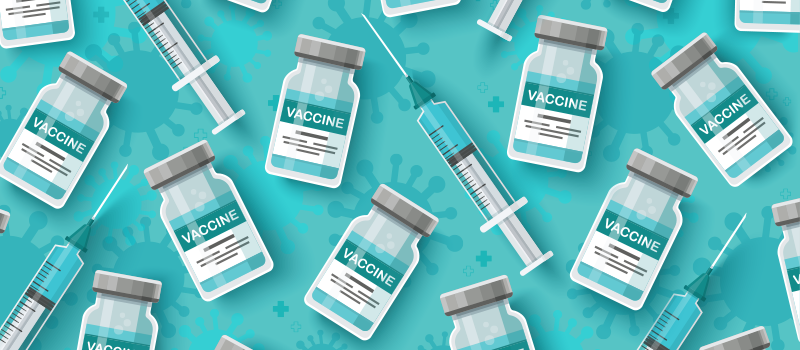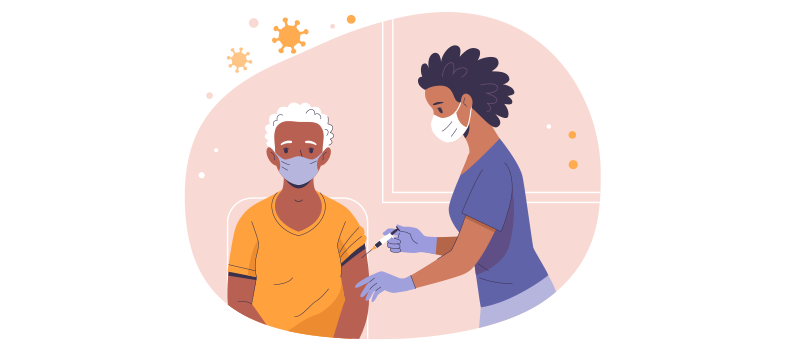What’s the Buzz
The Bee Healthy Blog
How to Keep Classrooms Safe From COVID-19

While the COVID-19 pandemic may not be over, many people (especially high school students) are anxious to return to a pre-pandemic life with kids back in school for in-person learning. However, depending on the present status of COVID-19 cases in certain areas of the U.S, some parents may be concerned for their children's safety as they head back to school. Health officials at the Centers for Disease Control (CDC) have developed a guide on prevention strategies that K–12 school administrators can use to help protect students, teachers, and staff slow the spread of COVID-19. Continue reading to learn more about COVID-19 classroom safety this fall.
Types of Classroom Settings
According to the CDC, If prevention strategies are strictly adhered to, K–12 schools can safely open for in-person instruction and remain open throughout the school year. Ultimately, the decision on what school and learning look like is usually made locally by school district boards and government officials. Overall, schools primarily choose from one of these three options:
- Distance learning: All instruction is done remotely in this model using technology and other tools for students at home. School staff may use a video platform such as Zoom.
- In-person schools: This model is similar to traditional schooling with enhanced health and safety measures and procedures to enforce physical distancing. Some schools may take advantage of hosting classes in outdoor air if possible to slow the spread of COVID-19.
- Hybrid schools: This model includes elements of both physical distancing and in-person schooling for students and staff.
Best Safety Practices During the COVID-19 Pandemic
The CDC states that it is critical for schools to implement the following COVID-19 prevention strategies to prevent the spread of the virus at a child’s school:
- Correct use of masks
- Physical distancing to avoid close contact, ideally 6 feet apart
- Handwashing
- Maintaining clean and healthy facilities
- Contact tracing, isolation, and quarantine
Correct use of masks:
Students, teachers, and staff are required to wear well-fitting face masks with proper filtration at all times while in school. Masks should be required in all classroom and non-classroom settings, including hallways, school offices, restrooms, gyms, auditoriums, etc. Masks should also be required on school buses and other public transportation. There are exceptions for certain people, settings, or activities, such as while eating or drinking or students with disabilities.
Social/Physical Distancing:
Students should maintain at least 3 feet distance apart from others--in areas of high COVID-19 transmission, students should be 6 feet apart. In addition, the CDC recommends keeping 6 feet apart in the following settings for health and safety:
- Between students and staff
- When masks cannot be worn (lunchtime, etc.)
- During activities when increased exhalation occurs, such as sports.
- In common areas such as hallways and auditoriums
Other suggestions for social distancing include staggered scheduling, in which school arrival and drop-off times or locations alternate schedules with a fixed amount of students and staff to decrease contact as much as possible.
Handwashing:
Students should be taught proper handwashing through ongoing health education. In addition, students should be given appropriate supplies, and teachers/staff should use proper handwashing etiquette.
Parents should also enforce hand-washing at home and explain to their children why it's essential to wash their hands with soap and water for at least 20 seconds, especially before and after eating, coughing/sneezing, or adjusting a face mask. Develop daily routines before and after school that foster healthy habits, such as packing a backup face mask and hand sanitizer in the morning and washing their hands when they come home from school.
Maintaining clean and healthy facilities:
It’s important to make changes to physical spaces to maintain a healthy environment during the COVID-19 pandemic. This includes improving ventilation and cleaning surfaces that are often touched, such as doorknobs and light switches. Changing the typical classroom layout can also help maximize physical space for students.
Contact tracing, isolation, and quarantine:
When there is a confirmed COVID-19 case, whether it be a student, teacher, or other staff members, the school should report positive cases to the department of health as soon as they are informed. In addition, school officials should notify families of close contact as quickly as possible after they are told that someone has tested positive (within the same school day). Some school districts may also offer COVID-19 testing to ensure a safe environment for students.
What to Do if Your Child is Exposed to COVID-19?
If your child is exposed to COVID-19 at school, it’s crucial to remove them from school and quarantine them. Close contacts should quarantine unless they are fully vaccinated or have tested positive in the last three months and do not have any symptoms. Students, teachers, and staff in quarantine should stay home and follow the direction of the local public health department about when it is safe for them to be around others. If a child with a disability is required to quarantine, the school must provide services consistent with federal disability laws.











SOCIAL